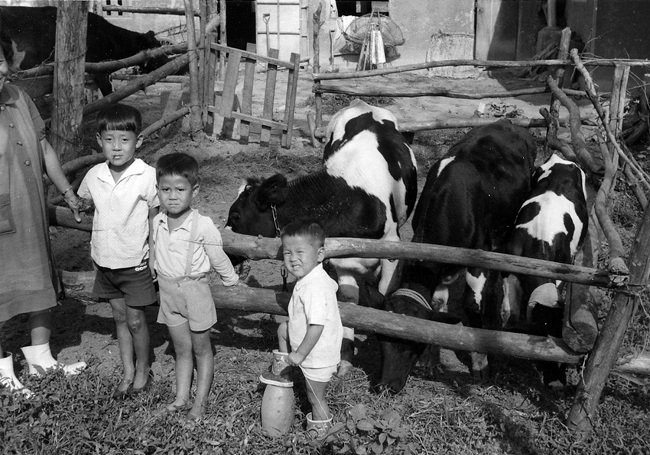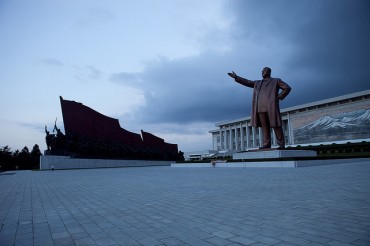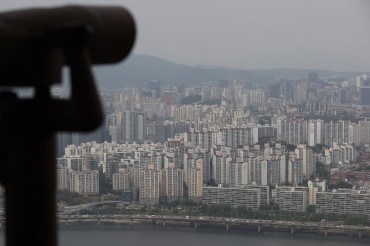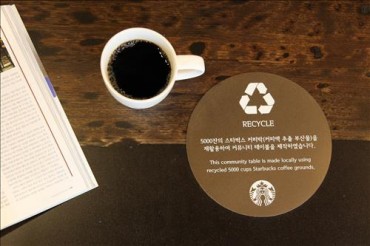
This undated photo, provided by South Korea’s agriculture ministry on Dec. 7, 2022, shows dairy cows to be donated to Nepal.
SEOUL, Dec. 22 (Korea Bizwire) — An Asiana Airlines flight Thursday from South Korea to Nepal carried some highly unusual passengers: 42 dairy cows were aboard as part a project that illustrates the value of paying it forward.
The cows are the first batch of a total of 101 Holstein heifers and two breeding bulls to be sent to the South Asian country to help develop its dairy industry through the genetic improvement of cattle.
They were to arrive at the Tribhuvan International Airport in the Nepalese capital of Kathmandu later in the day, with the remainder to be shipped in three additional batches by Korean Air by next week.
The donation is part of the “Milky Way” project, a joint initiative of the governments of South Korea, Nepal and Heifer International aimed at transforming Nepal’s dairy sector.
South Korea, once a recipient of aid from Heifer International, cleared hurdles that prohibited the export of genetic resources to Nepal, in what Heifer officials say completes a full circle of giving back.
One of the 101 cows was donated by Lee Jae-bok, who runs a dairy farm in the southeastern city of Andong. He received two dairy cows from Heifer International decades ago.
“The Korean War ruined all dairy farms in South Korea. We had nothing at that time, and we couldn’t even imagine drinking milk,” the 84-year-old man recalled.
At the height of the 1950-53 Korean War, Heifer International launched the Operation of Noah’s Ark for Korea project and sent dairy cows to the war-torn nation to help it secure good sources of nutrition and develop the dairy industry.
From then through 1976, South Korea had received around 1,000 cows, including one donated by then-U.S. President Dwight Eisenhower, and some 3,000 pigs, goats, rabbits, and other animals, as well as 1.5 million honey bees.
“I received two cows — one in 1969 and the other in 1972, and they were just like a silver lining. I think their help served as a basis for the revival of our livestock industry,” Lee said.
His farm now has around 80 milk cows, and South Korea has become the world’s fifth-ranking nation in terms of milk productivity after Israel, the United States, Canada and Spain.
“I am not sure until when I can continue this job. But I want to relay the gift of hope that I received to those in underdeveloped nations. My country and I were in a similar situation to Nepal just a few decades ago.”

This undated photo, provided by Heifer International Korea on Dec. 22, 2022, shows a Nepalese giving one of her goats to a neighbor after raising them with the help of the organization.
In Nepal, the bulls will be placed at three National Livestock Breeding Offices, which will supply high-quality semen to 500,000 dairy farmers to help improve the dairy sector.
Some 7.5 million milk cows are now being raised in Nepal, far more than 390,000 in South Korea. But their milk yield is lackluster due to the lack of systematic programs, genetic resources and poor feeding, according to officials.
One indigenous dairy cow in Nepal produces an average of 880 kilograms of milk per year and a crossbred cow around 3,000 kg per year, with the comparable figure for a South Korean dairy cow coming to about 10,000 kg a year.
The result is a deficit of dairy production in Nepal. The country is a net importer of dairy products.
Several South Korean veterinary doctors and dairy technicians flew to Nepal aboard the Asiana Airlines flight to offer education and follow-up support.
South Korea also plans to provide Nepali officials and dairy farmers a chance to learn related knowhow and technologies at South Korean dairy farms.
“We need to provide technical support to ensure 101 cows can increase to 1,000 and 2,000,” said Lee Ju-san, an 85-year-old former professor of biological science and technology at Yonsei University who witnessed the infant stage of Yonsei Dairy, which started in 1962 after receiving 10 cows from Dillon Wesley Throckmorton, an American pastor.
Deepak Kumar Kharal, secretary of livestock development at the Nepal Ministry of Agriculture and Livestock Development, said dairy is a priority sector for the government of Nepal and South Korea’s donation of cows will be very valuable to Nepal.
“We are committed to expand the benefits to millions of families engaged in dairy industry in the country,” Kharal said at a handover ceremony at the airport attended by the South Korean ambassador to Nepal, according to Heifer Nepal.

This undated photo, provided by Heifer International Korea on Dec. 22, 2022, shows Korean children standing at a farm along with milk cows donated by the international community in the 1960s.
Heifer Korea financed the project through crowd-funding and various donations programs along with South Korean dairy farmers and related companies.
“It is inspiring to hear that a country that endured war revived its dairy sector and came to be listed among the top dairy cattle producers within 50 years,” said Prabin Gurung, knowledge management and communication manager at Heifer Nepal.
“It brings us hope that in the next few decades we can achieve a lot to transform our dairy sector in similar ways and one day give back the gift we received as donors as opposed to recipients.”
The 101 heifers will be handed over to 50 dairy farmers in Kamalamai, the biggest municipality in Nepal, to establish an elite nucleus herd of bulls’ mothers. It is the first time that Nepal has received such a large scale of animals as a gift.
“The heifers will be given to the farmers on condition that they give their first newborn calf to their neighbors and teach them farming knowhow. We hope that some 300 farmers receive at least one heifer through this project,” Heifer Korea chief Lee Hae-won said.
The organization seeks to help those in need to stand on their own feet, rather than giving them a one-off donation, and the initiative is expected to help generate real income for Nepali farmers, Lee said.
Choi Chung-hee, the owner of Immanuel Dairy Farm who donated four heifers to Nepal, said his family was able to live because his grandfather got a cow from Heifer International when there was nothing.
“My family thought of it as a debt that had to be repaid someday. It is meaningful that we can give back what was donated after 60 years.”
(Yonhap)






